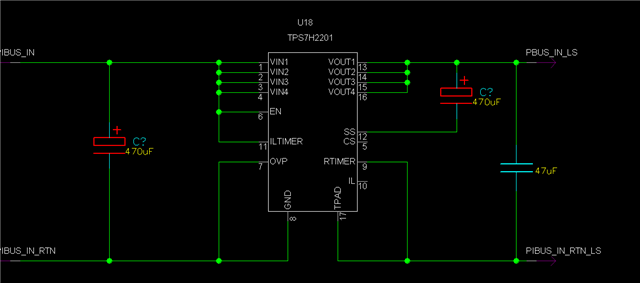Hello,
I would like some guidance as to what value of pull-down resistors to use for the CS and IL pins please.
I am not using the OVP, UVP, or the timer functions and have permanently enabled the device as shown below.
By setting Css to 470 uF and with Vin=+5V, I have set the rise time to approx. 138 mS.

Please advise ...
Kind regards,
Rajan



